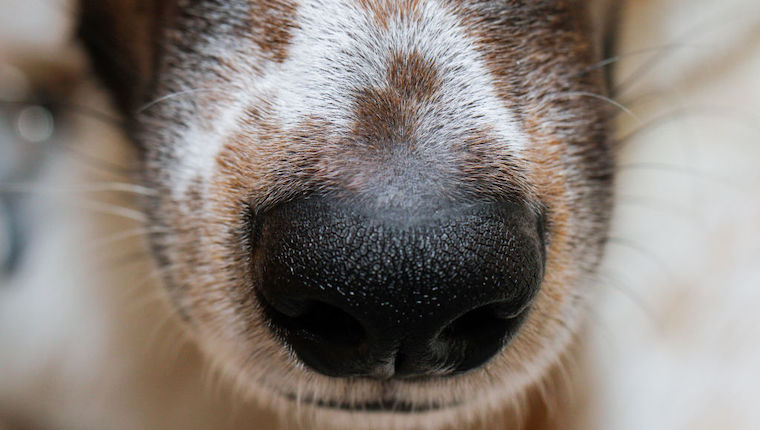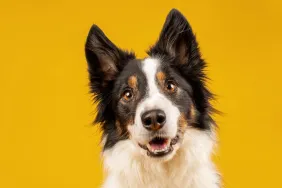Most humans primarily rely on sight to navigate and interpret the world around them. But according to new research from Cornell University, dogs use sight and smell in tandem.
Dogs’ Scent-to-Sight Connection the First Found in Any Species
In a study published in the Journal of Neuroscience, researchers illustrated a direct connection between dogs’ sense of smell, vision, and specific brain regions. It is the first record of such a link in any species.
“We’ve never seen this connection between the nose and the occipital lobe, functionally the visual cortex in dogs, in any species,” Pip Johnson, assistant professor of clinical sciences and senior author of the study, told the Cornell Chronicle.
“It makes a ton of sense in dogs. When we walk into a room, we primarily use our vision to work out where the door is, who’s in the room, where the table is,” she told the publication. “Whereas in dogs, this study shows that olfaction is really integrated with vision in terms of how they learn about their environment and orient themselves in it.”
The researchers performed MRI scans on 23 healthy pups and used advanced neuroimaging to locate the white matter pathways or “information highways” in the participants’ brains. They discovered links between the occipital lobe, spinal cord, limbic system, and piriform lobe. The occipital lobe handles sight, while the piriform lobe is responsible for the sense of smell. The limbic system processes memory and emotions. It also processes behavior, such as hunger and feeding.
The connection between sight and scent doesn’t exist in humans.
Laying the Groundwork for Further Research
Johnson said the study corroborates clinical experiences with blind dogs, who can navigate their surroundings much better than humans with the same level of visual impairment.
She said her findings could be tremendously reassuring to pet parents of dogs with incurable eye diseases.
The research also sets the stage for further exploration of the mammalian brain. It is possible, Johnson said, the same connection could occur in other species; we just haven’t discovered it yet.
Next, Johnson will use the same technology to examine cats’ and horses’ olfactory systems. Ultimately, her goal is to better understand animal brain physiology and disease.









